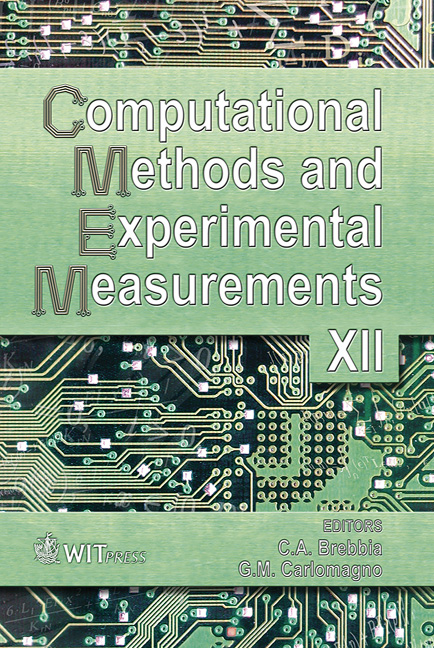Flow Mode-transition Of Natural Convection Inside Inclined Complex Enclosures
Price
Free (open access)
Transaction
Volume
41
Pages
13
Published
2005
Size
899 kb
Paper DOI
10.2495/CMEM050771
Copyright
WIT Press
Author(s)
H. Wang & M. S. Hamed
Abstract
Steady, two-dimensional natural convection in an air-filled, inclined, curved bottom enclosure heated from below and cooled from above has been investigated numerically. A general quadratic equation has been used to represent curvature of the bottom wall considering various maximum middle heights. The effect of geometric shape of the curved bottom on mode-transition and the hysteresis phenomenon (multi-steady solutions) associated with thermal convection inside inclined enclosures has been reported. Simulations have been carried out for Rayleigh numbers, based on cavity height, in the range between 103 and 104 and cavity aspect ratio equal to 4. The hysteresis phenomenon has been investigated as angle of inclination was varied from 0o to 90° and back to 0o. Results indicate that mode-transition and, hence, rate of heat transfer of buoyancy driven flows is greatly dependent on the shape of the bottom wall. Multi-cell flow patterns, normally observed in the case of flat-bottom cavities, can be eliminated and thereby, flow mode-transitions occurring due to change of the angle of inclination can be avoided. The existence of multi-steady solutions also strongly depends on the curvature of the bottom wall and could also be eliminated or controlled. Findings of the present study are useful in the design of heat transfer systems where sudden changes in the rate of heat transfer due to flow-mode transitions and variations of effectiveness of heat transfer inside cavities due to the hysteresis phenomenon can be eliminated or controlled in a certain desired way. Keywords: natural convection, inclined cavities, complex enclosures, modetransition, hysteresis phenomena.
Keywords
natural convection, inclined cavities, complex enclosures, modetransition, hysteresis phenomena.





